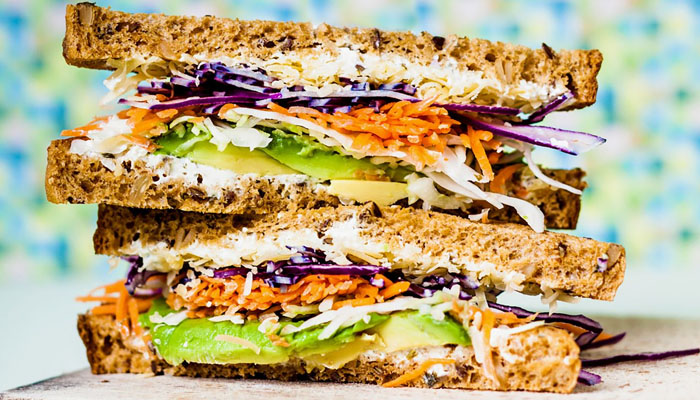How to make a healthy sandwich?
47% American adults consume sandwich but not necessarily healthy ones
There are a few things you can do when creating a sandwich to maximise health advantages, as per the information from the United States Department of Agriculture (USDA).
The category of "sandwiches," a lunchtime favourite, offers an almost infinite variety of options and taste profiles. Of American adults, 47% consume a sandwich on any given day, according to Health.
Now, a new version of the MyPlate food category guidelines specifically for sandwiches has been released by the USDA and MyPlate National Strategic Partners to assist Americans in creating healthier lunches (or breakfasts and dinners).
Starting with grains, making half of our grains whole is a healthy choice, according to the original USDA MyPlate. Whole grains, whether in the shape of bagels, buns, tortillas, pitas, or whole wheat bread, are perfect for sandwiches.
Add as much food as you can. Nutrient-dense vegetables such as leafy greens, bell peppers, zucchini, and onions are a simple way to load up a sandwich. Even fruits like sliced apples, grapes, or raisins can appear with the correct flavour combination.
Select a low-fat protein. Protein-rich meals that are lower in fat and sodium, such as mashed beans, canned tuna, or leftover chicken, are also excellent choices.
Change the spread. Sometimes you can stick with the traditional mayo, but you should also think about adding other options that are lower in sodium, saturated fat, and added sugars. These may be nut butter, hummus, Greek yoghurt, or roasted garlic.
Reduce expenses without sacrificing fun or flavour. You may make a nice sandwich and save money by starting with leftovers or selecting produce that is in season.
-
What kind of cancer does Colleen Hoover have and how is she managing it?
-
Living with chronic pain? This simple technique may help
-
Are your daily nasal decongestant sprays safe? Find out what experts say
-
Why depression is more than 'just in your head'
-
Study finds your morning coffee could help with type 2 diabetes
-
Westfield Bondi Junction hero Inspector Amy Scott faces rare cancer diagnosis
-
Blood pressure medication linked with suicide risk? New study explains
-
Cold weather may worsen urinary problems, physicians warn












